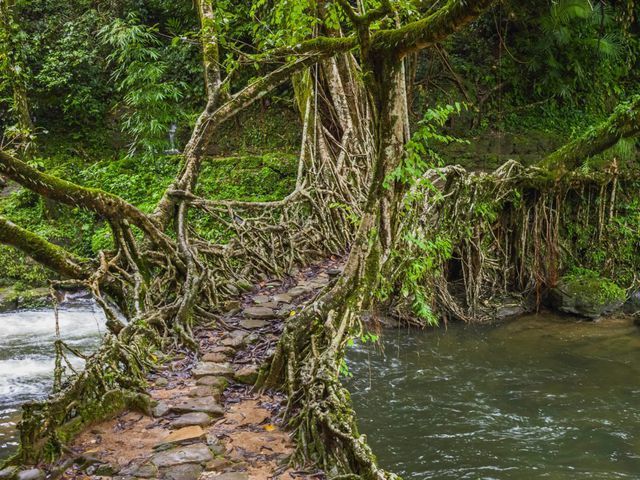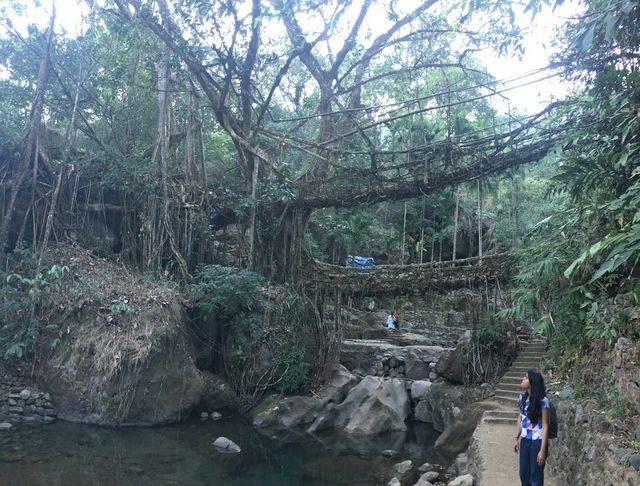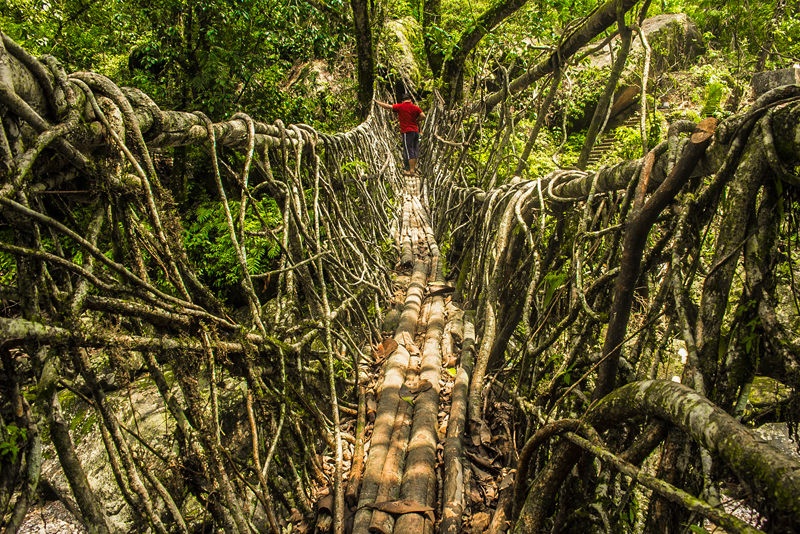The structures made from giant tree roots are woven together to form a ‘living bridge’ suspended across the river, creating a masterpiece of nature’s art. Having existed for hundreds of years, the bridge is still in good use.
In the wettest place in the world, visitors do not cross the river on a reinforced concrete bridge. It is a ‘living bridge’ woven from the roots of the surrounding giant trees, creating a masterpiece of nature’s art.

Located in northeastern India along the Bangladesh border, the Indian state of Meghalaya is home to some of the highest annual rainfall in the world, with the village of Mawsynram topping the list with the highest rainfall.
To survive in these wet conditions, the indigenous Khasi people rely on ingenuity, creating “living bridges” made of woven tree roots to cross rivers, thereby helping villages stay connected and avoid isolation.

The giant trees still survive over the years. The more their roots grow and connect with each other, the more durable the bridges become. On average, each bridge like this can withstand the weight of 35 people at a time.
Without using reinforced concrete, tree root bridges can even last for hundreds of years. They remain stable against heavy rains and storms and floods.

In addition to the interesting features of the tree root bridges, Mawsynram village is also famous throughout India because the people have long emphasized the importance of environmental protection. This is also the cleanest village in India, with no garbage around. This highlight has become a brand, attracting tourists to visit, creating a source of income for the locality.






